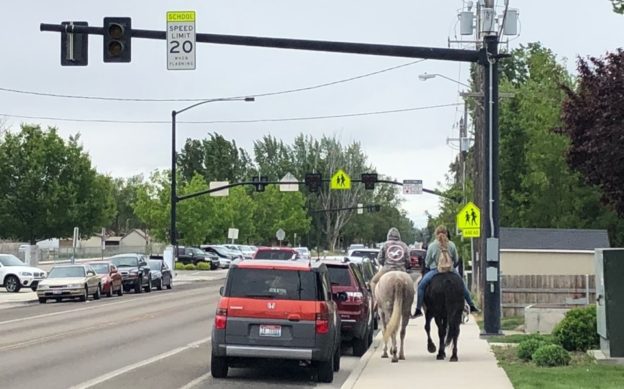by Don Kostelec
March 27, 2020
“When encountering someone outside of your immediate household, trying to remain at least 6 feet apart.” That’s what the National Institutes of Health (of Dr. Fauci fame) said in its Director’s March 19, 2020 post about beating COVID-19.
Have you tried that on a four-foot wide sidewalk that lacks a buffer from the street? What about on a sidewalk that has a railing or retaining wall on the back side of it? Have you attempted to keep your six-feet of space while passing someone on an 8-foot wide shared use pathway?
The recommendations to keep our space from other people during these crazy times are revealing the shortcomings in our dominant sidewalk and pathway design practices. What happens when you come across someone in a wheelchair or someone using another mobility device? How do you respect their needs and give them proper space? As the image below shows, what are our choices in keeping social distance from people in these situations?
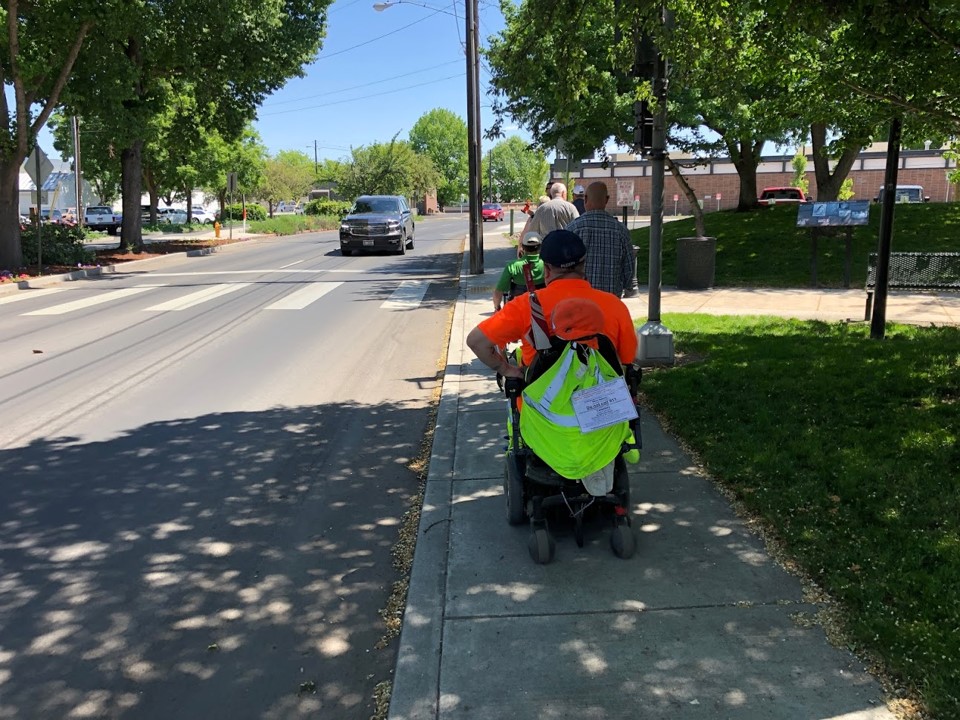
Luckily, the above situation has open space on the backside of the sidewalk so there is an option to move to the grass to allow someone to pass and attempt to keep our distance.
But what about the situation below? This sidewalk is so tight due to its proximity to the street and the railing that it’s impossible for two people to walk side-by-side or pass one another without risking contact or having to walk in the street.
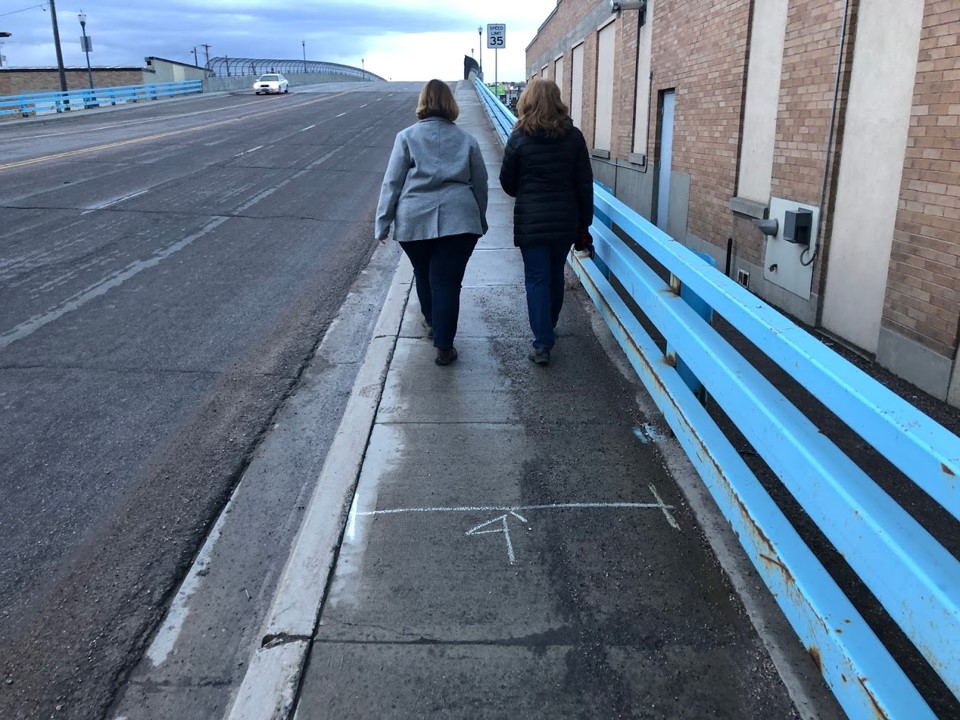
These design shortcomings revealing themselves during COVID-19 social distancing orders aren’t some type of secret. Prevailing design guidance used by transportation engineers and planners to make other roadway design decisions point to these design flaws.
The Highway Capacity Manual (HCM) is published by the Transportation Research Board serves as a go-to guide for transportation professionals to design roadways. It is primarily used–as you would expect–to make sure as many motorist inconveniences are addressed when an agency embarks on a corridor design or study. It’s where you find details on calculating things like motorist level of service.
HCM also includes information on level of service and operational needs for people outside of cars. The figure below illustrates what HCM says about effective walkway width in relation to things like building faces or walls on the backside of a sidewalk or lack of a buffer between the curb and sidewalk. (Source: Page 25 of this pedestrian and bicyclist level of service paper from UCLA). A walkways functional width is reduced by 18 inches when it lacks a horizontal buffer from the curb adjacent to the street. That same reduction in effective width occurs when there is a vertical presence such as a railing or building on the back side of the walkway or when a sidewalk or pathway has a vertical barrier buffering it from moving traffic.
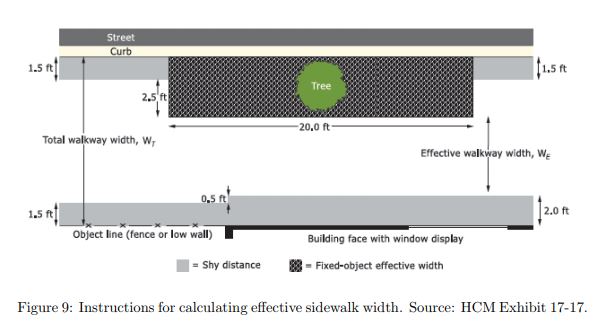
Federal Highway Administration’s (FHWA) Office of Safety mirrors HCM in its Pedestrian Road Safety Audits Guidelines and Prompt Lists: “Pedestrians rarely use the foot and a half of the sidewalk closest to the roadway or a building face.” (page 37)
Therefore, the picture of the person in the wheelchair moving along a four-foot sidewalk is really a 2.5-foot sidewalk if we look at effective width. That pictures of the two people walking on the four-foot sidewalk has an effective width of one-foot, according to the same design manual used by engineers to decide how to design space for motorists.
For bridges FHWA states:
- “Often bridges are designed with only a curb separating pedestrians on the sidewalk from vehicular traffic. This measure alone is often inadequate as the curb does not form an adequate barrier between vehicular and pedestrian traffic. Vehicles traveling at speeds over 25 mph can mount a curb at relatively flat impact angles ” (page 38).
Now, that doesn’t mean the space is completely unusable, as you see in the image of the two people on the bridge, but it does make the space less safe and definitely uncomfortable. The person on the left has their left shoulder almost overhanging the road. How would it feel when they get buzzed by a truck operating close to the curb line?
This concept of effective or functional width in relation to a lack of buffer or presence of a railing is no different than the considerations that engineers give motorists when designing a bridge. They don’t put the motor vehicle travel lanes up against the bridge railing. Prevailing bridge design standards include a shoulder as buffer between the edge of the travel lane (or fog line) and the bridge railing. This is oftentimes four-feet of space or more.
How does this work in a pathway setting?
We are fortunate to have a great Greenbelt system where I live in Boise, Idaho. Over the past two weeks I have self-isolated at home with the exception of a couple of grocery store trips and daily walks along the Greenbelt. The recent movement in many cities to invest in shared used pathways gives us better space to address our physical and mental health needs during the COVID-19 pandemic.
However, in these settings we still experience the results of design treatments that defaulted to a minimum width. The image below shows an 8-foot wide shared use pathway (the minimum width indicated in prevailing design guidance). How does one pass someone while going in the same direction and maintain the 6-foot distance being requested by health professionals? Engineers rarely design a street to have minimum dimensions for motor vehicle lanes (9 feet on collectors; 10 feet on arterials based on the AASHTO Green Book), so why do non-motorized users have to operate in pathways designed to the minimum dimensions?
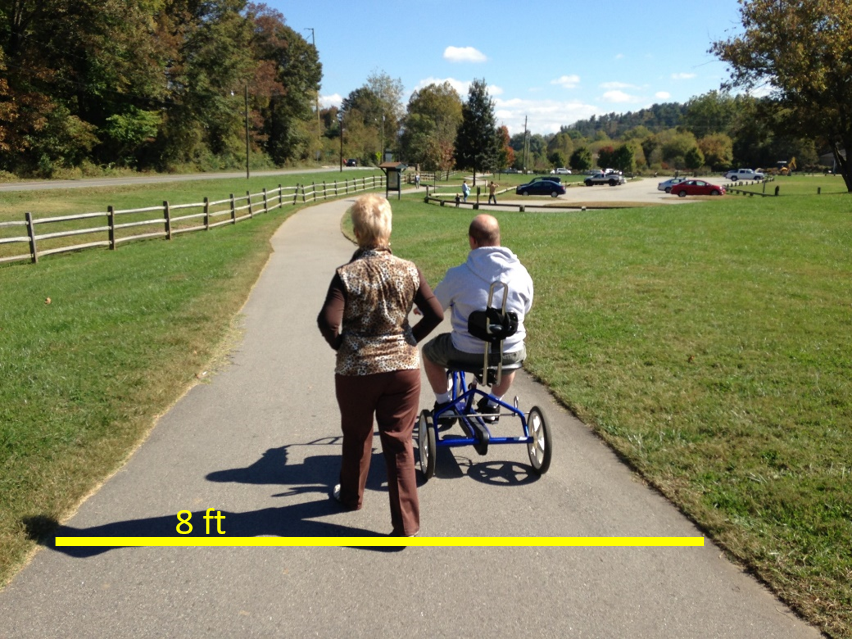
Compare that eight-foot wide pathway to the 14-foot wide pathway below. It provides much more space to pass in either direction and gives adequate buffer when someone like a bicyclist is passing at a greater rate of speed than the pedestrian.
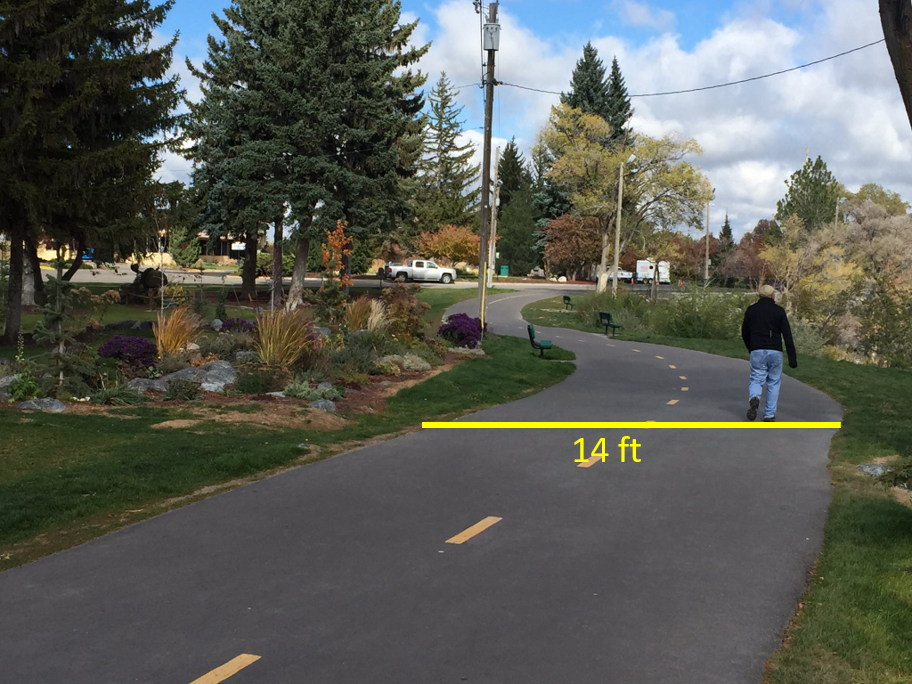
On bridges, the horizontal width considerations are even more important when considering functional width. This is due to bicyclists and their handlebars being at a width that can become entangled in railings. A common design treatment on pathway bridges is to simply carry the 10-foot wide pathway treatment through the bridge. That represents a failure by designers to consider functional width and shy distance. As the image below shows, a 10-foot wide tread width on a pathway bridge results in only seven feet of functional width.
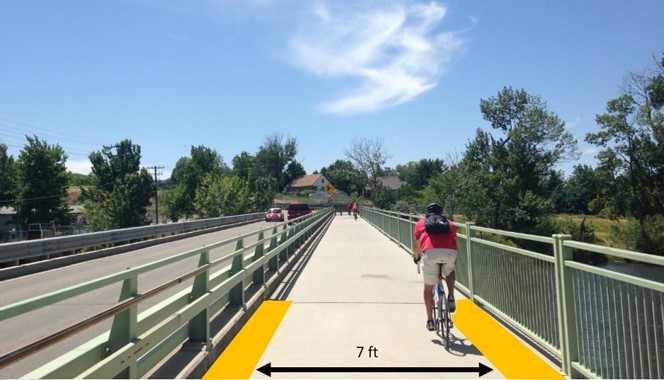
Compare that to this 14-foot wide pathway bridge (and note the generous buffer space from the railing given to motorists on the travel lane side). The design results in an 11-foot functional width. This image also illustrates the science of good design. Note the debris field inside the left side of the pathway railing. This collection of debris almost uniformly falls and stays in that 18-inch area.
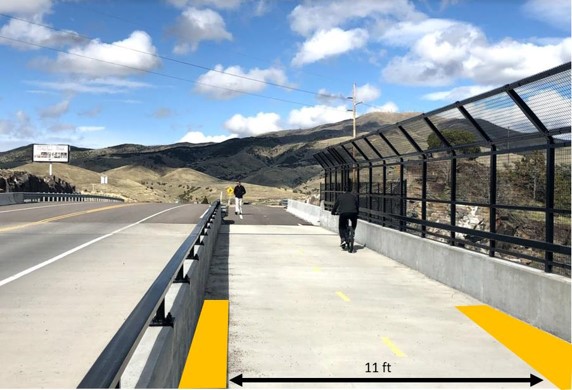
Yeah, I’m the nerd who is out walking and bicycling and observing these things. I’ve also found that it has altered the routes I take on my daily walks and ride to avoid being subjected to substandard design that has the potential to compromise my health and the health of others during this pandemic.
Now that I’ve ruined your own experience, happy walking and bicycling! And stay well, my friends.

